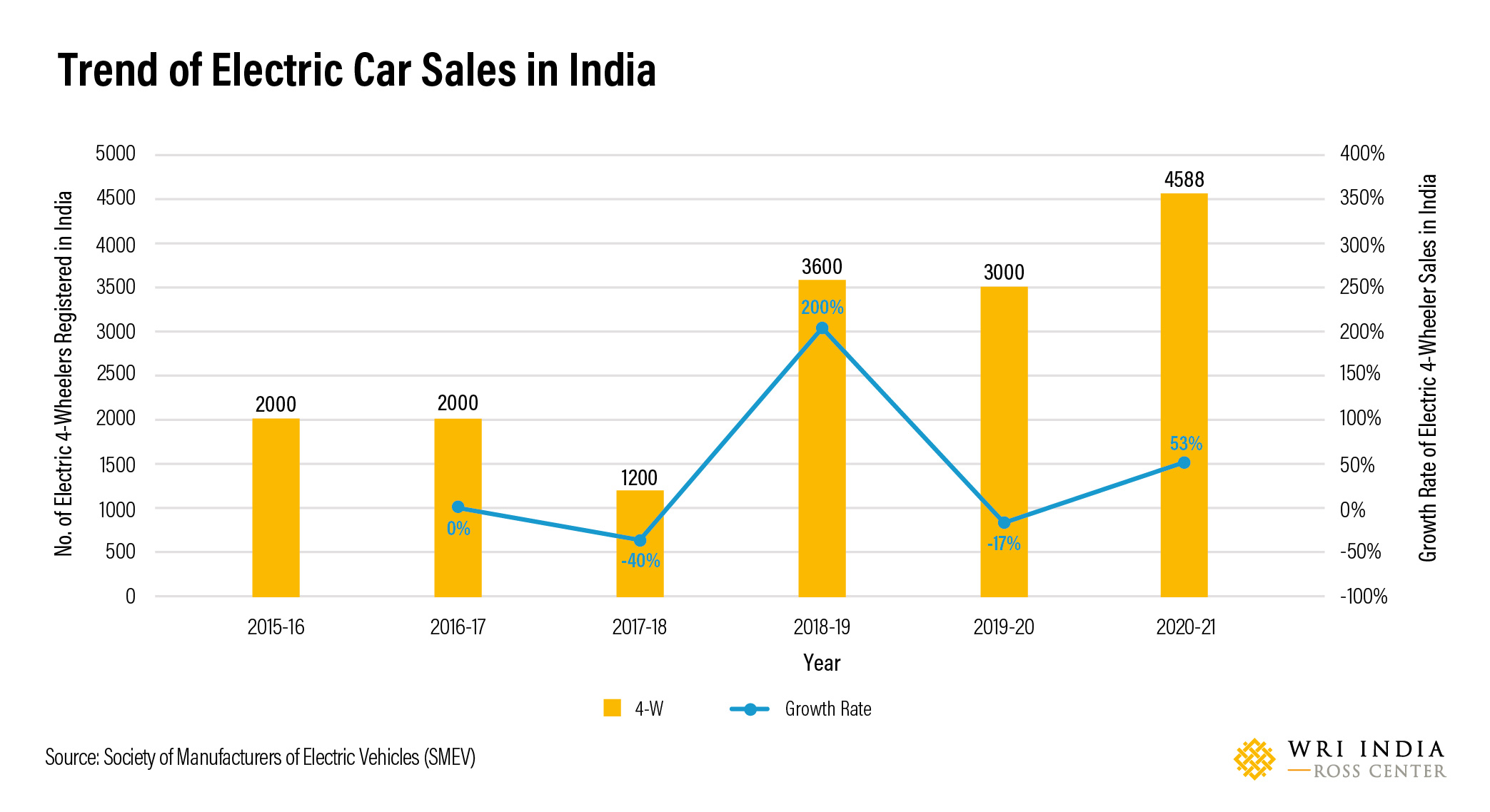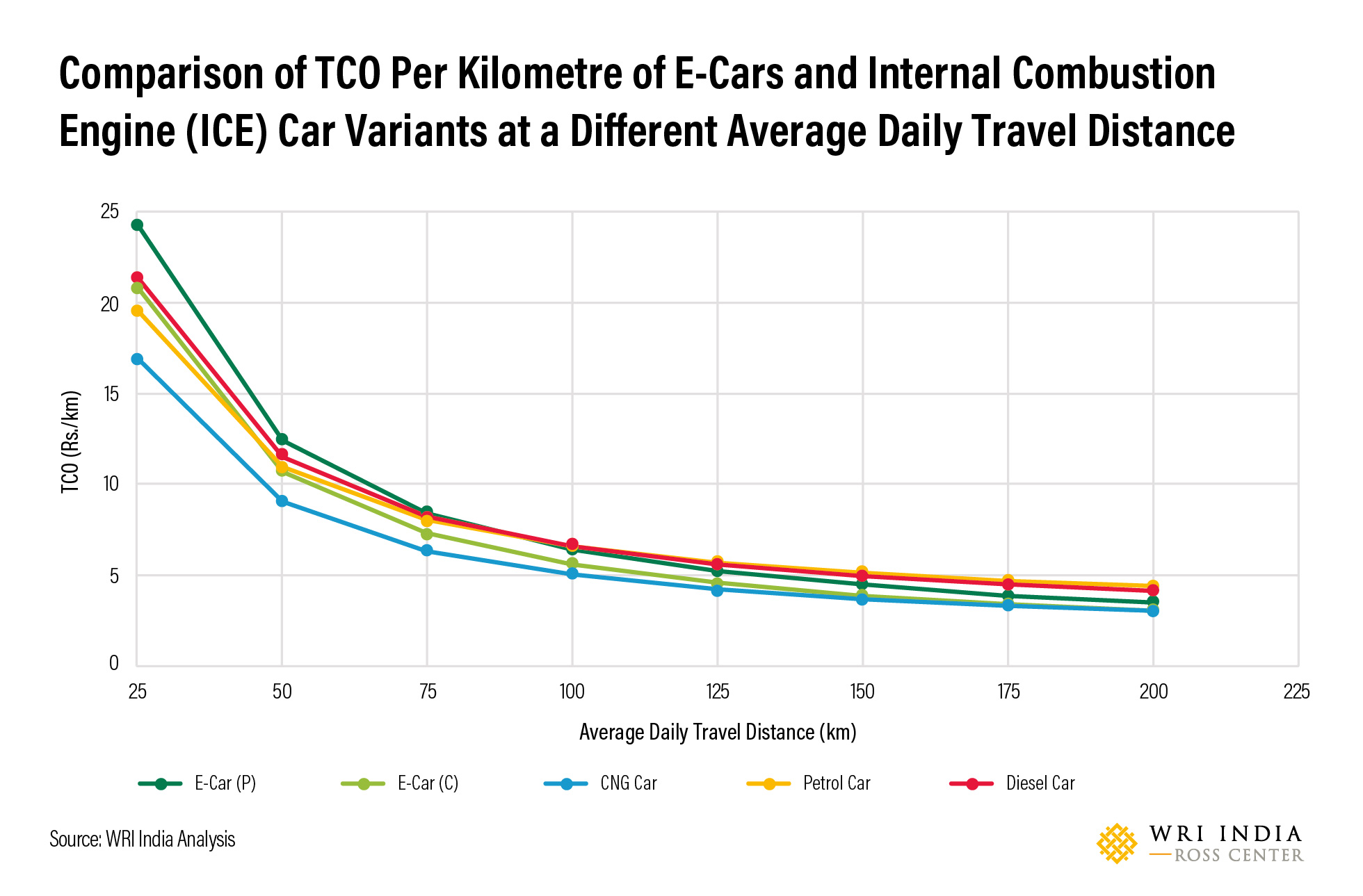Business Model Innovation to Accelerate E-Car Adoption in India

An improvement in the air quality was the only positive impact of the strict restrictions imposed in the wake of the COVID-19 pandemic. Delhi, one of the world’s most polluted cities, witnessed a 48% reduction in nitrogen dioxide (NO2) emissions during the national lockdown, of which reduction in tail-pipe emissions were a major component. People across the nation avoided public transport due to the fear of contracting the virus. In a bid to continue the sight of cleaner skies and pure air in Indian cities, the need of the hour is to promote electric mobility.
Globally, Electric Vehicle (EV) adoption, in particular, is driven by the involvement of the government and its policies. For example, the US President in February 2021, ordered the government fleet to be electrified, resulting in the American automobile companies pushing the game with aggressive ad campaigns for their EV offerings. The central and state governments in India have also been in the electrification race by introducing policies including the FAME scheme, the Vehicle Scrappage Policy, mandating the use of EVs by government officials, and creating a sound charging infrastructure network.
Status of e-car adoption in India

Source SMEV
While the sale of e-cars has not seen much progress compared to other vehicle segments, the pandemic urged the potential buyers in India to choose cleaner EV variants in the 4-Wheeler segment, witnessing a 53% increase in sales in FY 2020 (Figure 1). E-car adoption in India is currently driven by demand aggregators operating in the B2B and B2C model and Energy Efficiency Services Limited’s (EESL) bulk procurement model under the National e-Mobility Programme. EESL has been engaged in decarbonising the government’s fleet by leasing e-cars procured in bulk from manufacturers and achieve economies of scale. Although this model was met with shortcomings in achieving the set target due to a substantial lack of e-car variants, limited range and insufficient demand from organisations, EESL fairly brought e-cars into the limelight and substantially facilitated their adoption by fleet operators.
Many start-ups venturing into the electric ride-hailing and car rental market in India have partnered with EESL for leasing electric cars in their fleet. Affordable service subscriptions ranging from an hour to 3 years and flexible operation being offered by rental and ride-hailing services could help Indian cities skip right over the age of private (combustion-powered) vehicle ownership to one where e-mobility prevails.
Economic Viability
Estimating the economic viability of a vehicle is majorly dependent on its upfront purchase cost and daily utilisation. Commercial vehicles travel five times more than their private counterparts, easing their Total Cost of Ownership (TCO). Coupling this with lower operation and maintenance cost compared to the rise in fuel prices of ICE variants, e-cars used for commercial purposes gives a dead-heat competition to even CNG variants.

Despite the absence of FAME-II subsidy for private e-cars, the TCO per km becomes less than petrol and diesel vehicles for the average daily travel distances of more than 100 km (Figure 2). Currently, FAME-II subsidies available for e-cars in a commercial application and high vehicle utilization are among major facilitators in the adoption of e-cars by aggregators and fleet operators.
Emerging Business Models & Financing mechanisms
Although the electrification of fleet 4-wheelers has gained momentum, the scale of finance required in EV business remains a major barrier. Traditional bank lending options limit the scope of funding expensive EVs, which necessitates high upfront contribution from investors and places start-ups with limited credit history and higher risk profile at the crux of this paradigm. To lower these costs, innovative financing mechanisms and business models for e-cars could be explored to encourage new entrants in the business.
- Leasing model: Companies can play an intermediary role between vehicle manufacturers and fleet operators by providing the EVs on lease to fleet operators. As EV manufacturers innovate each year with better performances, such leasing mechanisms could help cut down on capital extensive initial purchases and concerns over the fleet getting obsolete within a few years.
- Battery leasing model: Batteries presently constitute 40-50% of an EV’s purchase cost. Private customers or fleet operators could lease batteries as a service from battery lessors (battery or vehicle manufacturers) in newly purchased EVs on a monthly or annual basis. Separating the lease between the vehicle and battery would allow buyers to finance EVs with more competing terms compared to ICEVs.
- Aggregation model: Aggregation helps in better utilization of the asset and also makes an easy case to avail financial resources. Aggregators who can pool risks and achieve better credit control have the opportunity to reduce loan interest rates by borrowing from EV specialist lenders.
Summary and Way Forward
E-car adoption in India is presently spearheaded by the B2B segment with many start-ups reaping benefits of higher utilisation of EV fleet followed by the B2C or private segment. However, large-scale adoption of e-cars would not only require financial incentives and innovative business models to deal with the higher purchase costs but also the development of a robust charging network. Even though the challenges and recommendations mentioned are essential for promoting EVs, other measures that can be followed up are:
- As GST on EVs has been reduced to 5%, the same can be offered for batteries separated in battery leasing options to reduce finances at the supply end.
- Strategic alliances providing mutual benefits between key EV stakeholders could help in the planning of sustainable charging infrastructure and a better preparedness of the whole ecosystem over the long run.
- Developing a bottom-down approach to unleash an EV revolution with the creation of city-specific EV roadmaps that sets the right goals and amount of infrastructure required to serve a city’s needs. This would ensure better implementation of the State Policies and help in addressing the bottlenecks for EV adoption.
Anshika Singh is a consultant with the Electric Mobility team at WRI India.
